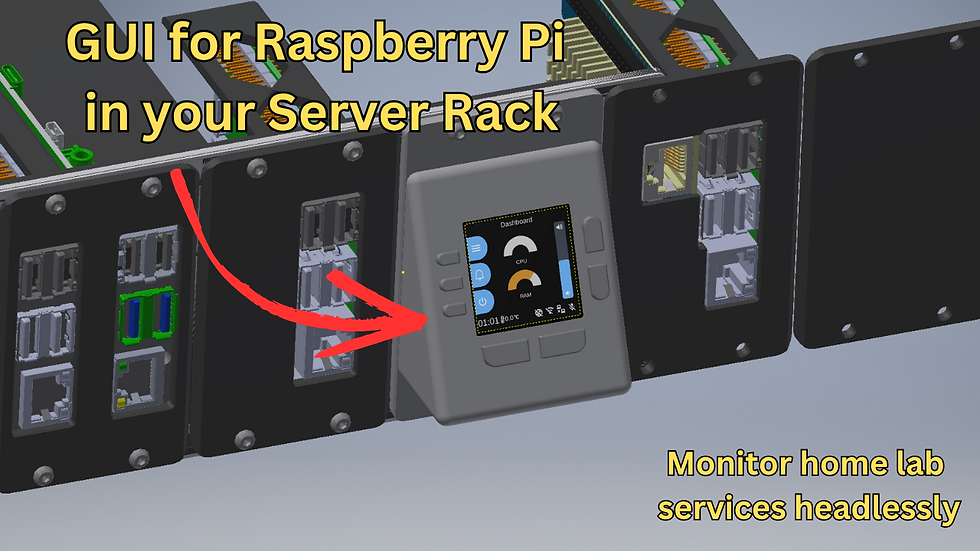GUI for Raspberry Pi inside Mini Racks
- Mehrdad Majzoobi
- Jul 27
- 2 min read

I have realized that a lot of people nowadays self-host services and set up home labs with mini racks.

A significant challenge I've personally encountered is quickly obtaining health status from self-hosted services and machines, along with having the capability to control my Raspberry Pi headlessly within a mini rack.
So, it got me thinking about creating a built-in GUI that users can easily add to their Raspberry Pi nodes. This would be suitable for mini or full racks, or even other locations.
I have previously designed this GUI for an open source project I have been working on (called Ubo pod: github.com/ubopod/) and decided to detach/decouple the GUI into its own standalone module for this use case.
So this is roughly how it is going to look like:
The GUI enables headless control of your Raspberry Pi, along with monitoring of system resources and application status. The image below summarizes its capabilities.

I am designing a new PCB and enclosure as part of this re-design to allow for a new form factor that mounts on server racks (mini or full rack).

This modularization and decoupling can also enable me to quickly iterate on other design concepts for future designs of Ubo pod and its accessories.
For example, I am playing around with a design that tilts the display/GUI for a better viewing angle.
I am recording my journey of re-designing this and I would love to get early feedback from users to better understand what they may need or require from such a solution, specially on the hardware side. You can watch the first part of the video here:
The software behind the GUI is quite mature (github.com/ubopod/ubo_app) and you can actually try it right now without the hardware inside the web browser as shown in the video.
This video walks you through the steps needs to run the GUI on a bare Raspberry Pi:
All PCB designs are available here: github.com/ubopod/ubo-pcb
If you have any suggestions or feedback on the design, please comment below and let me know.



Comments